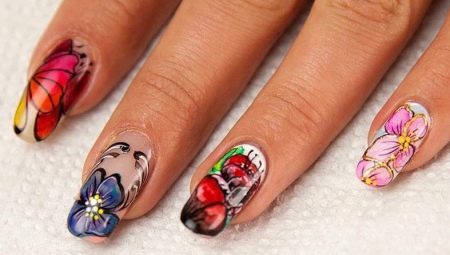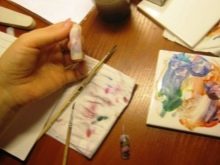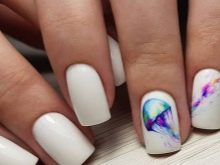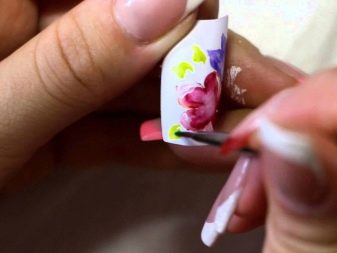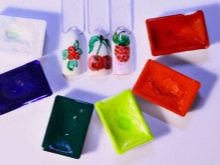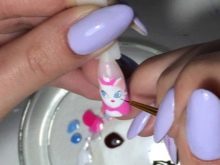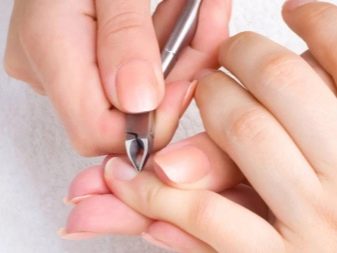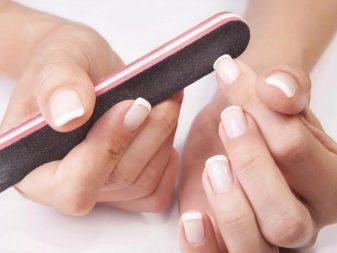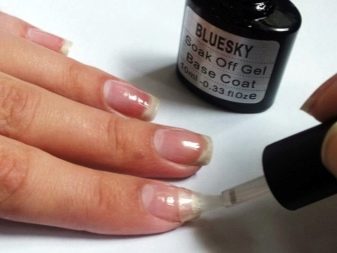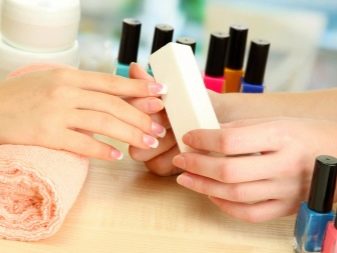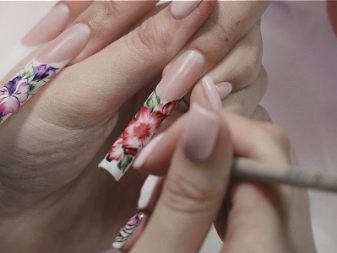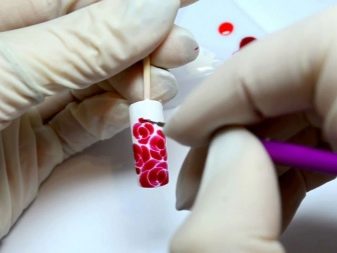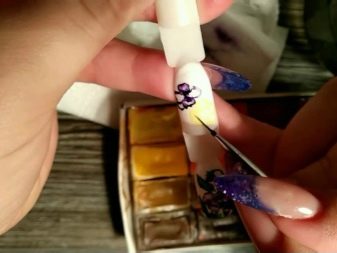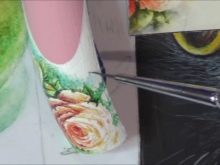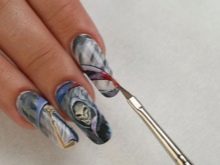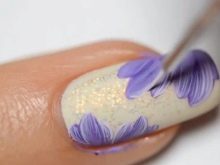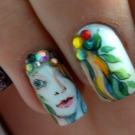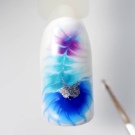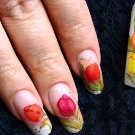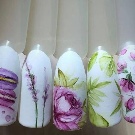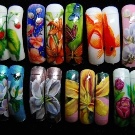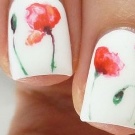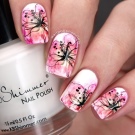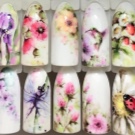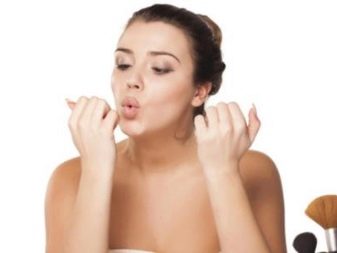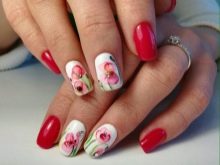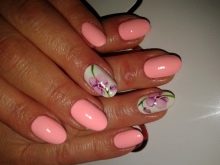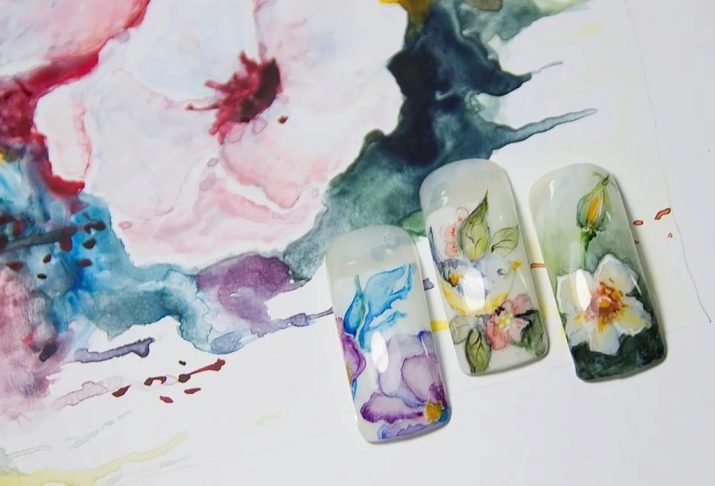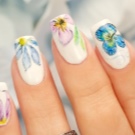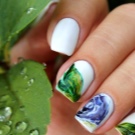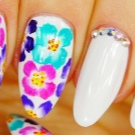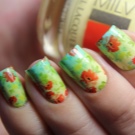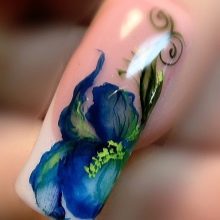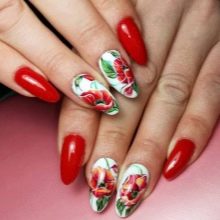Watercolor painting of nails is one of the leading trends of modern nail art. Such a manicure is expensive, it fascinates, delights and does not allow you to look away. Since opinions on materials and the technology itself are controversial today, it is worthwhile to dwell on this topic and specify its nuances.
Materials and tools
Watercolor design is called because apparently it has similarities with artistic watercolor. These are the same halftones, the lightness and translucency of colors, the use of a thinned consistency and a slight spreading effect. But contrary to the prevailing opinion, not water for children is used at all, but artistic watercolor paints. They differ in composition and form of release, as well as gently fall on the work surface.
However, not all of these pigments fall on the nail so that on top of one layer you can impose another. Therefore, it is necessary to thoroughly approach the choice of materials for watercolor design.
Paint on nails with special manicure brushes. As a rule, they are very thin, differ in length and thickness. For example, the brush size can be not only zero, but also marked with two zeros.
Diluted watercolors with ordinary cold water, and therefore problems with the consistency of the work usually does not occur. In the same way as when working with a sheet of paper, use a palette for dilution of colors, obtain the necessary tones, perform the imposition of color. In addition, you can use acrylic paints, which also include dilution with water. However, they are distinguished by the fact that after drying, they will not be able to be removed from the brush, and therefore in the process of work you will have to ensure that the brush does not dry out.
If one tool is changed by another, if you need to choose a tool of another thickness, it is necessary to immediately wash the used brush. In addition to watercolors and acrylic paints, some masters can use a diluted gel polish for this technique. It is necessary to breed it because gel varnish differs in a consistence, thickish for drawing. As a thinning agent, you can use a top or clincher.
Background Preparation Features
Perform watercolor design on the prepared ground, working with gel polish. Since coatings of this type have their own characteristics in the technology of application, they initially create a background for the pattern, following all the rules of its layering. That he will be a kind of canvas for design. The work will have to use a drying lamp, without which the formulations used will not dry.
First, prepare the nail, remove the cuticle and pterygium around it, give the desired shape, clean out all the excess. After carry out the removal of gloss from the nail plate itself. After that put a layer of base, pigment and top, each of them is dried immediately after application in a special lamp. After the top is dried, the surface under the pattern is buffered (treated with a soft grinder) to get a slightly rough surface. After that you can paint on it with water-based paints.
How to draw?
You do not need to wet anything further, the watercolor effect is achieved due to the lightness of the texture of the paints themselves. They can immediately fill the basis of the future pattern, using a very light pigment, well diluted with water.Due to the liquid consistency of the paint will fall on the background with a soft transition degree of intensity. You can highlight some areas, try in some places to shade the desired zone.
In fact, the work resembles the work of the artist, except in a reduced format. Gradually, they color the necessary areas, paint the penumbra, highlight the necessary parts of the picture, some work more, others leave blurred. It should be borne in mind that the paint in the process will dry very quickly, because it will be diluted with a tiny amount of water. Therefore, for the effect of smooth flow from one color to another, it is necessary to work quickly.
To make the desired image more beautiful, it is useful to use the finished picture. Looking at it, it will be easier to see where and what should be emphasized with specific shades of the paints used. The method of work is remarkable in that the colors can be mixed with each other, getting new shades and half tones. As a rule, such drawings do not overload with the number of layers, they are only made brighter by drawing a specific part of the image.
When you need to lighten any elements of the pattern, the colors are mixed with white pigment. At the same time, white color can dominate in some used tones, since this can create the effect of lightness. However, do not whiten the texture too much: you should not forget about the translucency of the shades used.
You can add bright spots directly on the nail, helping them to spread to the right place on the picture.
Brushes in the work change as needed. The more area they need to paint, the thicker the brush can be. In the end, not all emphasize, but only some outlines and elements of the drawing, thereby leaving it light and translucent. It should be noted that the smaller the stroke and the thinner the outline of the line, the more similar the watercolor effect will be.
It is important to take into account the need to shade the background, for which a larger amount of water is added to the paint used. This technique will enhance the effect of watercolor on accent nails. Performing contours in some places of the picture, try to draw less water on the brush. To do this, the work uses a special soft brush designed for watercolor.
To make the lines even and confident, the brush should be positioned perpendicular to the nail.
Paint watercolor painting can be different. Sometimes the master performs an ordinary blot on the accent nail, and after it dries, it paints its outlines, for example, in the form of petals, thereby creating a beautiful flower. In addition, you can perform a preliminary sketch of the future picture, displaying approximate contours. The base is filled with a gradual overlay of colors and shades. After to stroke, sometimes even broken lines are applied to the edges of the print, often performing underlining the contour with several tones besides black.
How to seal?
Close the design of a particular technology. However, first you need to wait for the picture applied to the nail with watercolor or acrylic paints, finally dry. Otherwise, it will be spread when applying the sealing material.
The design can be blocked by a rubber top or a special two-in-one base-top.
In the method of using a rubber top there is one drawback. After the design overlaps, they will have to put a regular top on top of it to give the surface a gloss effect. If the “two in one” option is used, one overlapping layer with its mandatory drying in a special lamp is enough. This material is convenient because it very reliably seals all layers of the coating, and therefore there is no need to correct the plate for as long as the manicure decorates women's hands. After the sealing layer is dried in the lamp, it remains to remove the dispersion layer.
Expert advice
Beginners who decided to get acquainted with an interesting watercolor design technique, you need to listen to the basic recommendations of the masters in the field of nail art.
- Using a watercolor technique, it is important to consider that it needs a matte finish. From the gloss, it will roll regardless of its consistency and the manufacturer.
- Using acrylic paints or gel polish, you can ignore the type of varnish used for the substrate. In order to freely perform the design, in this case it is sufficient to remove the dispersion adhesive layer from the working background.
- The color of the substrate is preferably white or light. Dark and bright tones of the base will distort the beauty of the picture and spoil the watercolor effect.
- When performing drawings in the wet technique, you need to add more water to the paint, and the strokes themselves should spread slightly, flowing from one tone to another, which is possible only when the paint has not dried yet.
- In case of need of correction it is necessary to carry out washing off of paint. To do this, use a semi-dry brush and its pile absorb the excess intensity of the pigment. The same technique can correct the flaws of work.
- You can use the method of washing, in which one layer is applied to the other with a short drying in the lamp (2 seconds each). So you can gain brightness in certain places of a particular element of the image.
- To make your first designs more beautiful, you can focus on the examples of experienced craftsmen, following their video tutorials step by step every moment of drawing watercolor paintings.
To learn how to draw beautiful abstract roses on nails using the avar painting technique, see the video below.
